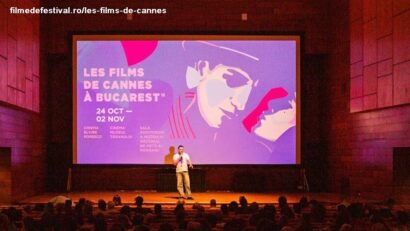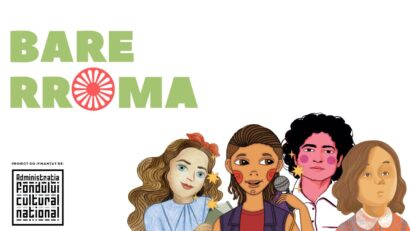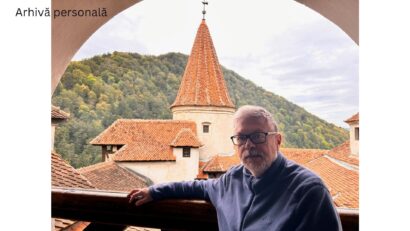The Breakup
“The Breakup” is an emotional performance built on a modern understanding of romantic breakups

Eugen Cojocariu and Ion Puican, 30.11.2024, 13:55
“The Breakup” is an emotional performance built on a modern understanding of romantic breakups, a show that had its national premiere at the Mobius Gallery in Bucharest, after its presentation in the Czech Republic and Slovakia. The production is made by a group of European artists led by director Ioana Păun. Ioana Păun is a director who focuses her work on human behavior in challenging situations. The director told us about the team of creators of the show:
“The initial team was made up of artists from Slovakia and I made a pilot with something completely different from what is seen now in Romania. In February it was ultra hyper interactive. Basically, two spectators were breaking up with each other without knowing each other, in this type of instruction of ours. I didn’t like what came out, and I went back to some, let’s say safer, performative expressions, which were more handy. I wanted to speak emotionally to an audience about what a special moment means to each of us, not just to me, “The Breakup”. … And the team in Bratislava had a core that was me and the set designer Matěj Sýkora. We were doing a kind of ping-pong of ideas. “How could we” or “how could I” represent or infuse, or provoke the audience to feel something as close as possible to what happens to them when they love each other and then break up? And I had one fixation, one thing that interested me was to expose the audience to two people kissing and discovering each other for the first time. A kind of first kiss that we have all experienced and then to find other similar actions that would continue this emotional journey.”
“The Breakup” is a discreet and intense experience, created to generate reflection on how we have experienced our relationships as a couple. Why “The Breakup”? Ioana Păun tells us:
“It was a subject that interested me, because, actually, personally speaking, I had a hard time handling it. That is, someone leaving your life or you leaving someone else’s life, especially romantically, but not only, the end of a relationship.”
Director Ioana Păun and her team explore a territory where the boundaries between feeling and technological progress are becoming increasingly blurred. We talked to Ioana Păun about the performance, how the performance was received by the audience:
“You can’t know exactly what each person feels, even if you talk to them. How was it received? I’ll tell you how it was received. In Slovakia, we filmed Bratislava and smaller cities, there were young people, elderly people, I don’t know, millennials. The young people were very fiery, and caught up in the idea and desire to express their own experiences and to probe themselves. That’s what I saw from the answers. Well, the audience interacts twice. We saw ourselves in the willingness to answer as much and as broadly as possible, and to somehow expose oneself, even if it’s anonymous. So this young audience, and by young I mean 18, 25, 26 years old, I saw a joy in probing some searches, some emotional experiences that they may face ultra frequently, in a way, I don’t know culturally how.”
The show offers the audience two QR codes through which they can get involved and interact. Director Ioana Păun tells us more about the audience interaction:
“Yes, it’s a kind of link that you receive on your phone, which you respond to. And your response is then, in one way or another, integrated into the show or made public, even if it’s anonymous. It’s a small audience, around ten people. I’ve had shows with four people, I’ve had shows with seventeen people. It worked best when there are around 10 people. A kind of community is created, and there are several moments in the show where the audience does, or completes, or says, or somehow leaves it up to us. And in a minimal way. So it’s a very simple show, there’s no complexity. They reacted differently, in each show it was different. Sometimes they were extraordinarily involved, depending on their mood, or what was born at that moment. Their pulse, the actresses feel the audience, but they don’t change their tempo, they don’t change their actions depending on the availability, or how interested, or involved, or bored the audience feels. So this question of “how is it received” is very difficult for me to ever answer.”






























